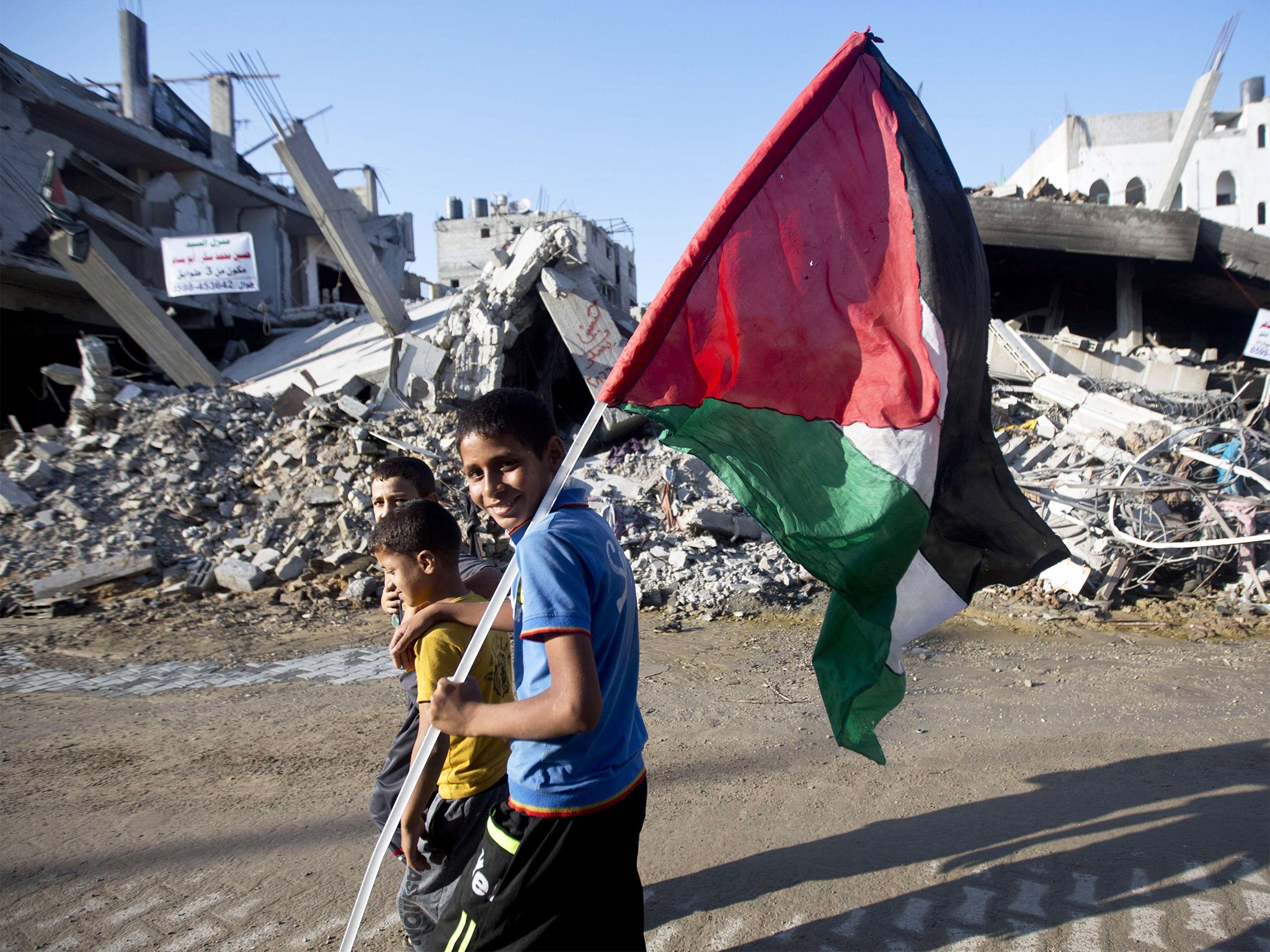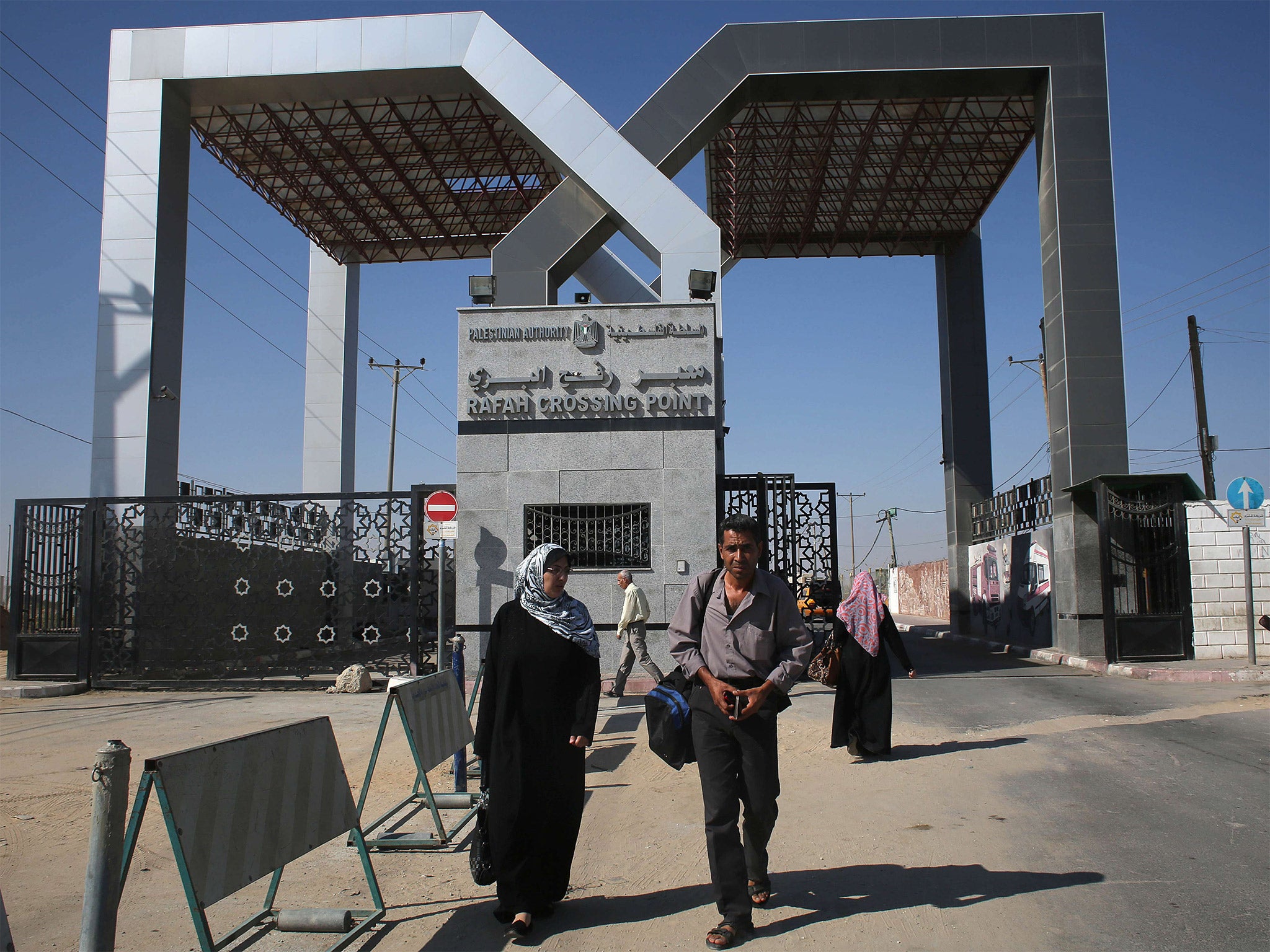Israel-Gaza conflict: No victory for Israel despite weeks of devastation
Palestinians have won: they are still in Gaza, and Hamas is still there


’Twas not a famous victory – but that’s what the Palestinians of Gaza are celebrating. There was much shaking of heads in the international media when the fireworks burst over that shattered land on Tuesday night. After more than 2,100 dead – about 1,700 of them civilians – and 100,000 wounded, what did they have to crow about? An end to the killing? Peace?
Well, no. In fact, Hamas – the vicious, horrible, terrorist Hamas with whom “we” (as in “the West”, Tony Blair, Israel, the US and all honourable men and women) cannot talk – has indeed won a victory.
Israel said it must be disarmed. It has not been disarmed. Israel said it must be smashed/destroyed/rooted out. It hasn’t been smashed/destroyed/rooted out. The tunnels must all be destroyed, Israel proclaimed. But they haven’t been. All the rockets must be seized. But they haven’t been. So 65 Israeli soldiers died – for what? And from under the ground, quite literally, clambered on Tuesday the political leadership of Hamas (and Islamic Jihad) whose brothers were participating – much against the wishes of Israel, the US and Egypt – in the Cairo “peace” talks.
In Israel, significantly, there were no celebrations. The ever-so-right-wing government of Benjamin Netanyahu had once more over-egged its victory demands and ended up with another ceasefire as strong and as weak as the equally febrile truce that followed the 2009 Gaza war and the 2012 Gaza war. Physically, the Israelis had won; all those broken lives and all those smashed buildings and all that destroyed infrastructure do not suggest that the Palestinians have “prevailed” (to use a “Bushite” word). But strategically, the Palestinians have won. They are still in Gaza, Hamas is still in Gaza, and the coalition government of the Palestinian Authority and Hamas appears still to be a reality.
Many times has it been said that the founders of the Israeli state faced a problem: a land called Palestine. They dealt with that problem coldly, ruthlessly and efficiently. But now their problem is the Palestinians. Their land may have been taken for Israel, their surviving land may be eaten up by Israeli colonies; but the wretched Palestinians simply won’t go away. And killing them in large numbers – especially in front of the world’s television cameras – is getting to be a bit much, even for those who still shake in their boots at the mere whisper of the calumny “anti-Semitism”. Israeli spokesmen even ended up comparing their actions to bloody Second World War RAF air raids, hardly a propaganda strike in the 21st century.
But the world will reflect unhappily on other things. The Hamas spokesmen, for example, raving about the destruction of Israel and Zionism, their exaggerations as preposterous as the Israeli excuses. The greatest victory the world has ever seen, indeed! Hamas has achieved “more than any Arab army has ever achieved against Israel”. Indeed! Hezbollah drove the entire Israeli army out of Lebanon after an 18-year guerrilla war – with far more casualties on both sides than Hamas could ever imagine.
And then how quickly we have forgotten the Hamas killer squads who dispatched at least 21 “spies”, two of them women, in cold blood against the walls of Gaza over the past seven days. I notice that they do not appear in the total list of Palestinian dead. And I wonder why not. Were they to be treated by the Palestinians as even less human than the Israelis? Of course, they were. In a week in which Isis returned to its execution pit, Hamas showed that its old killer touch is also still intact. After three of its top military leaders were liquidated by the Israelis, what did we expect? But it’s interesting that not one Palestinian protested at this no-court-no-jury-no-human-rights “justice”. Nor did they protest at the execution of 17 “spies” in 2008-9 – forgotten today – and another six “spies” (also forgotten) in 2012.
And then we have the “military” casualties. Around 500 were Hamas fighters; back in the 2008-9 Gaza war, perhaps 200 fighters were killed. But in that earlier war, only six Israeli soldiers were killed. In this operation, however, 10 times as many Israeli soldiers died. In other words, Hamas – and, I suppose, Islamic Jihad – have learned how to fight. Hezbollah, the most efficient guerrilla army in the Middle East, certainly noticed this. And the Gaza rockets stretched across thousands of square miles of Israel, notwithstanding the “Iron Dome”. Once you had to live in Sderot to be in danger. Now you can find your flight cancelled at Ben Gurion airport.
Mahmoud Abbas, needless to say, is grovelling to the Egyptians and Americans in thankfulness for the truce. But in the new “joint” Palestinian government, Hamas is going to be telling Abbas how many “concessions” he can make. Far from isolating the Muslim Brotherhood in Egypt and sidelining Hamas by producing his own made-in-Cairo peace agreement for the Israelis and Americans – swiftly rejected by Hamas during the conflict – President Field Marshal al-Sisi of Egypt has been forced to acknowledge Hamas as the major Arab participant in the truce agreement.
An odd thing, though. Right now, Egypt is bombing the Islamists of Libya, and the US is preparing to bomb the Islamists of Syria after bombing the Islamists of Iraq. But in Gaza, the Islamists have just won. This surely cannot last.
The ceasefire deal: Who gains what
Israel and the Palestinians agreed to an Egyptian-brokered plan to end the fighting in Gaza after 50 days of combat. The following are the broad parameters of the agreement, provided by Israeli and Palestinian officials.
Some of the immediate steps
* Hamas and other militant groups agree to halt all rocket and mortar fire into Israel.
* Israel will stop all military action including air strikes and ground operations.
* Israel agrees to open more of its border crossings with Gaza to allow the easier flow of goods, including humanitarian aid and reconstruction equipment, into the enclave.
* In a separate, bilateral agreement, Egypt will agree to open its 14km border with Gaza at Rafah.
* The Palestinian Authority to coordinate the reconstruction effort in Gaza with international donors, including the EU, Norway, Qatar and Turkey.
* Israel will extend the fishing limit off Gaza’s coast to six miles from three miles, with the possibility of widening it gradually if the truce holds. Ultimately, the Palestinians want to return to a full 12-mile international allowance.

Some longer-term issues
* Hamas wants Israel to release hundreds of Palestinian prisoners rounded up in the occupied West Bank after the abduction and killing of three Jewish students in June.
* President Abbas, who heads the Fatah party, wants freedom for long-serving Palestinian prisoners.
* Israel wants Hamas and other militant groups in Gaza to hand over all body parts and personal effects of Israeli soldiers killed during the war.
* Hamas wants a sea port built in Gaza. Israel has long rejected the plan, but it is possible that progress towards it could be made if there are security guarantees.
* Hamas wants the unfreezing of funds to allow it to pay 40,000 police, government workers and administrative staff who have largely been without salaries since late last year. The funds were frozen by the Palestinian Authority.
* The Palestinians also want the airport in Gaza to be rebuilt.
Reuters
Bookmark popover
Removed from bookmarks